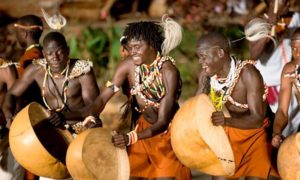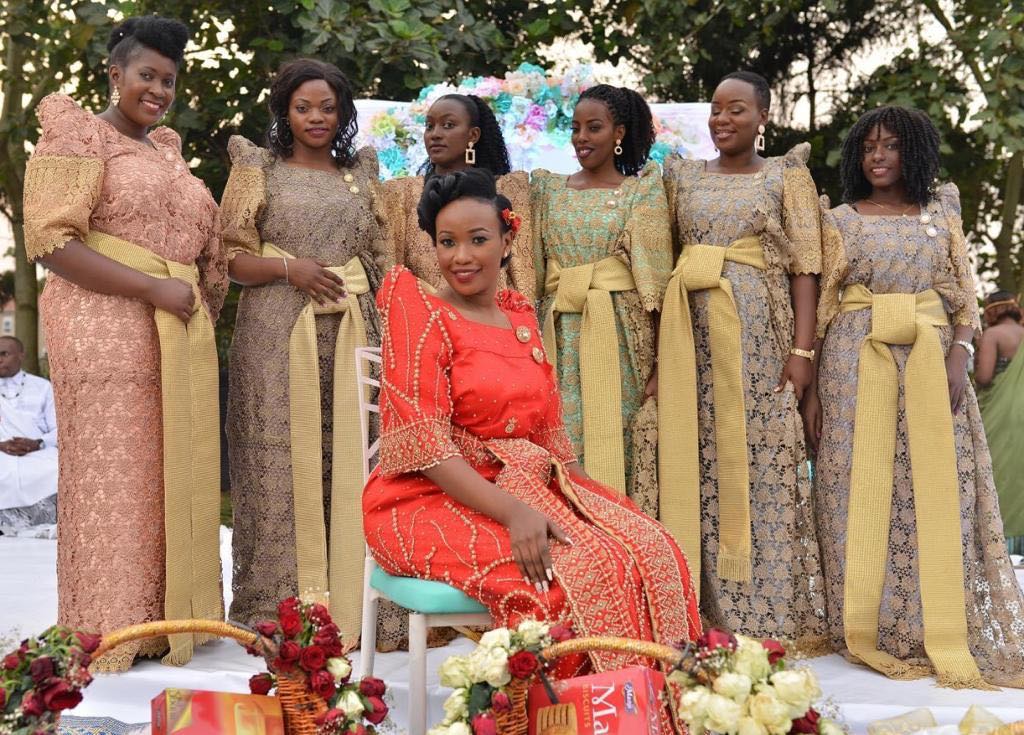Baganda and their culture
Baganda and their culture : The Baganda people live in Uganda, an east African republic, on the western and northern banks of Lake Victoria. There are roughly 4 million of them. The old Kingdom of Bunyoro borders the former Kingdom of Buganda on the north, while the Nile River borders the region currently inhabited by the Baganda people on the east. Tanzania, as it exists today, is located south of Buganda. The Kingdom of Buganda was the greatest of the ancient kingdoms, and the Baganda remain the largest tribe in Uganda. It makes up a little over 25% of Uganda’s overall land area. The capital and largest city of Uganda, Kampala, is located in Buganda.

Spoken language in Buganda
Luganda is the Bantu language spoken by the Baganda people. It belongs to the linguistic family of Niger-Congo. Muganda is the single form of Baganda in the Luganda language. Luganda is tonal, similar to many other African languages, which means that some words are distinguished by pitch. Different meanings can be assigned to identically spelled words based on their pitch. Luganda is full of proverbs, folktales, and metaphors.
Common riddles include, for instance:
My wife is one of those people who looks at her destination and her point of departure at the same time (a bundle of firewood, as the two ends are similar).
I use a razor blade to shave hills, which are created by burning grass in preparation for planting.
My acquaintance went to the grocery store to acquire food for his kids and never returned (water in a river).
There are spears all around my man all the time (the tongue, ringed by teeth).
The religion of the Buganda people
Nowadays, Christians make up the bulk of Baganda’s population, with Protestants and Catholics making up nearly equal numbers. Roughly 15% identify as Muslims or adherents of Islam. The majority of Baganda practiced the Balubaale cult, an indigenous religion, in the later part of the nineteenth century. The gods in this cult have temples associated with them. Each of these gods was worried about particular issues. There were deities associated with fertility, war, and lakes, for instance.

The Baganda people also held a belief in supernatural powers, specifically the actions of witches, who were believed to be responsible for disease and other calamities. Amulets, or charms, were frequently worn by people to fight against bad forces. The most important spirits were the Muzimu, or ancestors, who occasionally forewarned of approaching perils and visited the living in dreams. The cult of Balubaale is extinct. Nonetheless, there is still a lot of people that believe in witchcraft and ancestors.
Regardless of their creed, Baganda are deeply devout people in the modern era.
family dynamics
Marriage was referred to in the past as jangu onfumbire, which means “come cook for me.” This represented the dominant hierarchical structures found in the average household. The father and spouse were the greatest. The husband was served his food first, and both ladies and children submitted to him in deference to his authority. Children in Baganda today often talk of having a deep relationship to their mothers and feeling both dread and respect for their fathers.
A new household is started after marriage, usually in the husband’s village. Although polygamy—having more than one spouse—was not unusual in the past, most marriages are monogamous.
Buganda clothing
Abusuuti is the characteristic attire of rural Muganda (Baganda individual) women. This floor-length dress has short, puffy sleeves and a square neckline made of colorful fabric. The clothing is fastened by two buttons on the left side of the collar and a sash that is positioned just below the waist over the hips. The busuuti was traditionally made of bark-cloth and had no straps. On all festive and ceremonial events, the busuuti is worn. The ekanzu, a lengthy, white cotton robe, is the traditional attire of the Baganda people. It is worn over pants with a Western-style suit jacket on formal occasions. Younger folks dress in Western fashion. Additionally worn are ties, skirts, jeans, slacks, and suits.

Instruction
In the nineteenth century, missionaries brought formal education and literacy (reading and writing) to Uganda. The Baganda place a high importance on contemporary education and frequently make significant sacrifices to send their kids to school. Family members pool their resources to help an exceptionally bright student. The family member is required to assist his or her relatives after completing their education.
Athletics
In Uganda, track and field, rugby, and football (soccer) are the most popular sports. While ladies play track and field, guys in Baganda participate in all these sports. The Baganda were historically known for their prowess at wrestling. This was a sport for men of various ages. Events featuring wrestling were accompanied by singing, drumming, and drinking beer. Nonetheless, it was seen improper to overthrow the Kabaka. Other classic outdoor activities for boys include the competitive stick-throwing game and the side-by-side kicking game, where the object is to knock the other kid over.
hobbies and crafts
Apart from basketry and musical instruments, the production of goods made from bark-cloth was and still is important. A wooden mallet is used to pound the bark of mutuba fig trees after they have been drenched in water. This produces a soft substance that is painted and then divided into different-sized strips. Homes used to be divided by larger strips in the past.

Smaller pieces were adorned with black dye and donned by ladies of the royal court. Afterwards, the national attire was made of bark cloth. Bark-cloth garments are uncommon to find these days. The Busuuti, made of cotton cloth, has taken their place. Bark-cloth is still used today to create ornamental placemats, coasters, and patterns for other cards.
Things to do in the Buganda region
The Lake of Kabaka
The Kabaka’s Lake, the largest artificial lake in Uganda, was created in 1885 under the reign of Ssekabaka Mwanga II. It draws a lot of tourists who are hoping to witness the stunning birds that call its shores home.
Bulange Building: The Trail of Royal Heritage
These include the most significant structures in the Buganda kingdom: Bulange (the Parliament), Twekobe (the Palace), Kabakas, Lakes, Namasole (the King’s Maama), and Kasubi Tombs (the Kingdom Cemetery).
The exquisite characteristics of the Kasubi tombs are symbolic of the rich traditions and cultural legacy of the Baganda people.
